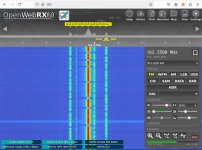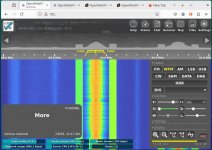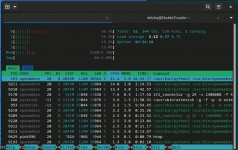View attachment 182152Over the last 24 hours of receiving a Pi 4 along with configuring and playing with
OWRX+, the SDRplay device affords more granular control. While the SDRplay RSP2 is obviously an improved device over an RTL-SDR, it really becomes clear using OWRX with various profiles in different bands. Still, I have the RTL-SDR dongles so I will offload stuff like ADS-B, NOAA, APRS, POCSAG, ISM and other single or several close frequency selections like FM and AM broadcast to the RTL-SDR v3.
The benefit of the RTL-SDR is a slightly reduced hit to the CPU.
The bookmarks feature is nice as well. I expected I would need to edit configuration files via a shell, but even adding the bookmarks are web based. ( Not the web browser bookmarks you may be thinking of ) I don't know why I didn't come across this software years ago, but I am benefiting from it being forked along with a revision history of trial and errors resolved.
The most inexpensive route for OpenWebRX+ would probably be a Pi 3B along with an RTL-SDR dongle. The preferred route is a Raspberry Pi 4 w/4GB of RAM or more along with an SDRplay device. Even if the SDR has a single port, one could use a diplexer or triplexer depending on antennas intended for use.
Right now, the only thing that gets in the way of my SWL/scanner hobby is my other hobby of transmitting. Fortunately, HP/Agilent limiters and switches keep things friendly along with filters...many filters to squash QRM not my own.
Time to add some profiles for this device as this thing can decode various modes along with packet, FT8, NAVTEX, ACARS, etc.
View attachment 182153






